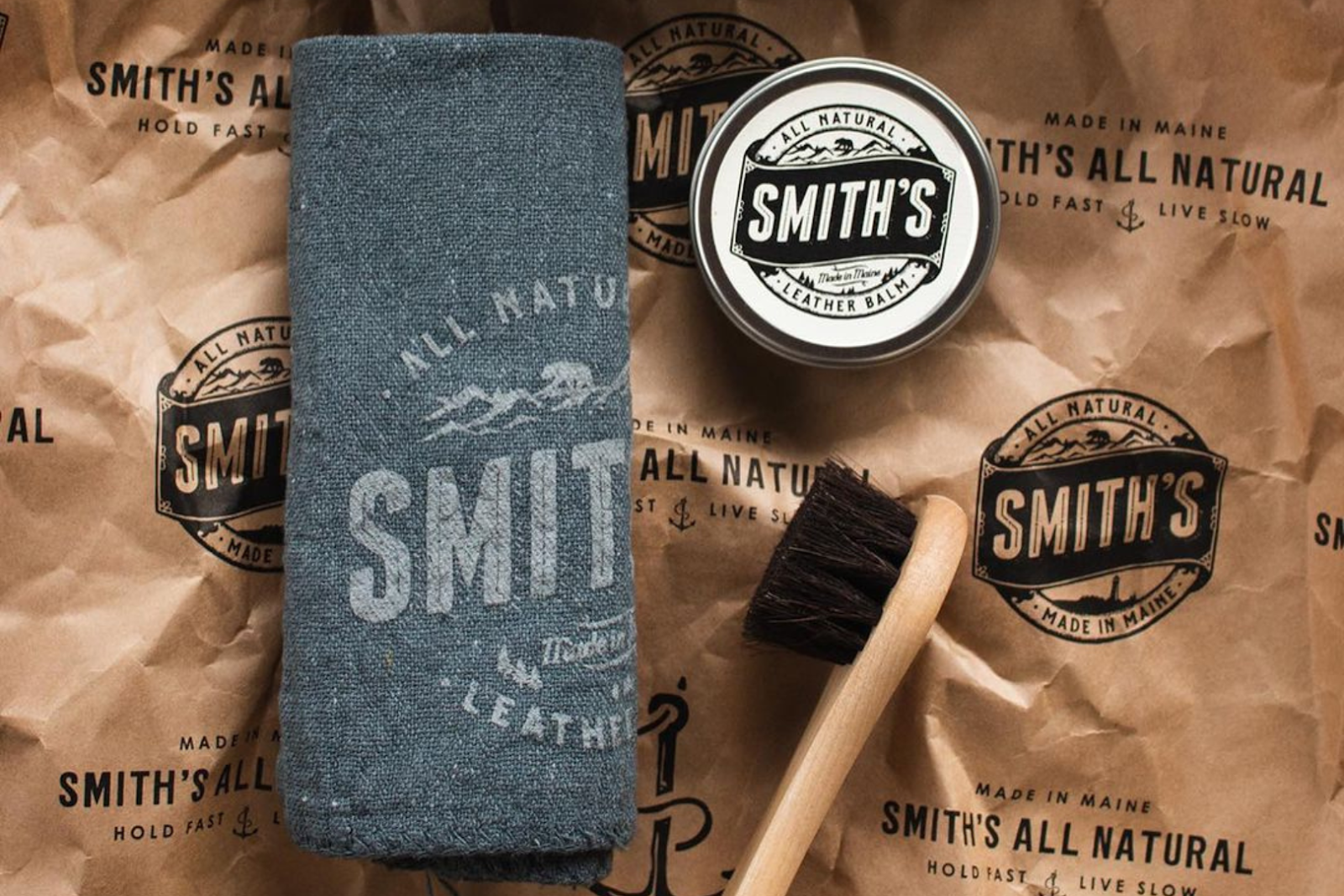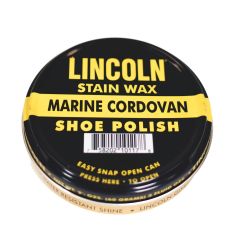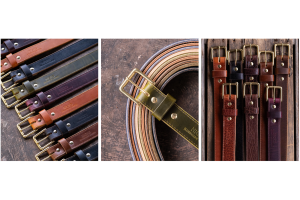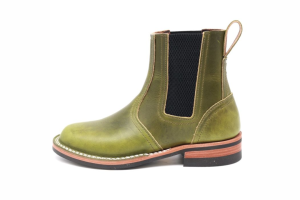Leather Polish

Key Takeaways:
- Selecting the Correct Polish: It's essential to choose a polish that matches the type of leather and desired finish to ensure effective care and maintain the boots' aesthetic appeal.
- Regular Maintenance Benefits: Regular use of the right leather polish not only enhances appearance but also forms a protective layer that prolongs the lifespan of the boots.
- Proper Application Technique: Applying leather polish correctly involves cleaning the boots, using the right amount of polish, and buffing to achieve the best results for maintaining and protecting the leather.
At Nicks Boots, we are renowned for our commitment to quality and craftsmanship. Each pair of boots is a testament to our dedication to durability and style. As experts in leather care, we understand the importance of maintaining your boots with the right products.
In this piece, we'll explore the essentials of leather polish—what it is, why it's crucial for your boots, and how to use it effectively. We'll guide you through selecting the perfect leather polish for your needs, applying it correctly, and ensuring your boots remain in pristine condition for years to come. Join us as we explore the art of boot maintenance and care.


What Is Leather Polish?
Key Ingredients
Leather polish is crafted from a careful mix of natural waxes, oils, and conditioners. These ingredients moisturize the leather, enhancing its flexibility and preventing dryness or cracking. Natural waxes, like beeswax, provide a smooth finish and help seal in the oils, which are crucial for maintaining the leather's natural elasticity. This combination not only cleans the leather but also improves its overall resilience against wear and tear.
Benefits Of Using Leather Polish
Regular use of leather polish significantly enhances the aesthetic of your boots by providing a rich, glossy shine. It forms a protective layer that guards against water, dirt, and stains, keeping your boots in optimal condition. This protective barrier also helps to prevent the leather from drying out and cracking, a common issue with untreated leather. Furthermore, polished boots are easier to clean and maintain, saving you time and effort in boot care.
Types Of Leather Polish
There are various types of leather polish available, each designed to meet specific needs based on the leather's finish and the desired effect. Cream polishes infuse leather with oils for nourishment, while wax-based polishes offer a higher level of protection and sheen. Some polishes are formulated to restore color to faded leather, whereas others focus more on providing a clear, protective coat without altering the leather's natural color. Choosing the right type depends largely on your boots’ material and your personal preference for boot finish.
Choosing The Right Leather Polish For Your Boots
Consider Your Boot Material
The type of leather your boots are made from is the primary factor in choosing the right polish. Smooth leather benefits from wax-based polishes that enhance shine and offer robust protection, whereas nubuck or suede requires specialized products that maintain their unique texture without clogging the pores of the leather. It's crucial to use a product that corresponds to your leather type to avoid damaging your boots and to maximize their longevity.
Desired Finish
Your preference for the boot's finish should guide your choice of polish. High gloss polishes, rich in waxes and silicones, are ideal for dress boots needing a shiny, sleek appearance, while natural finish polishes provide a more subdued sheen that enhances the leather without overwhelming it. Each type of polish affects the boot’s appearance and protection level differently, so selecting the appropriate finish can drastically improve the effectiveness of the product.
Polish Color
Choosing the correct color of leather polish can make a significant difference in maintaining or restoring the original look of your boots. Polishes are available in a spectrum of colors designed to match your leather as closely as possible, thereby rejuvenating faded leather and concealing blemishes effectively. If an exact match is not available, a neutral polish offers a versatile solution that adds shine and protection without altering the color.
Frequency Of Use
The frequency and conditions in which you wear your boots should influence the type of polish you choose. Boots worn daily or in rough conditions require a durable polish that provides a thicker barrier against wear and environmental factors. For boots worn less frequently or in gentler settings, a lighter polish may suffice, focusing more on maintaining the leather’s condition rather than providing heavy-duty protection.
Step-By-Step Guide To Applying Leather Polish
- Gather Your Materials: Begin by assembling all necessary tools: a good quality leather polish that matches your boots, a soft cloth or applicator brush, and a polishing brush. Ensure your workspace is clean and well-lit to facilitate the process. It's also helpful to have a clean, dry cloth for final buffing.
- Clean Your Boots: Before applying polish, clean your boots thoroughly to remove any dirt or debris. Use a soft brush to gently remove surface dirt, and for tougher stains, a slightly damp cloth may be used. Ensure the boots are completely dry before applying polish, as moisture can interfere with the absorption of the polish.
- Apply the Polish: Apply a small amount of polish onto the cloth or applicator brush. Use circular motions to work the polish into the leather, ensuring even coverage. Focus on one section at a time, allowing the polish to penetrate the leather's pores and restore its natural oils. Avoid using too much polish, as this can lead to buildup and reduce the leather's breathability.
- Buff to a Shine: After allowing the polish to dry (which usually takes about 20 minutes), use a clean polishing brush or soft cloth to buff the boots. Vigorous buffing brings out the shine and helps to evenly distribute any excess polish. For extra shine, a second light buffing may be beneficial.
Maintaining Your Boots: Long-Term Care Tips
Regular Cleaning
Consistency is key in boot maintenance. Regularly clean your boots to prevent dirt and grime from building up, which can degrade the leather over time. Use a soft brush to dust off surface debris before and after each wear, and consider a leather cleaner for deeper cleans every few weeks, depending on usage.
Condition Regularly
Leather conditioners are vital for restoring moisture that boots lose during wear. Apply a quality leather conditioner every few months, or more frequently if you're in dry or harsh climates. This will keep the leather supple and prevent cracks.
Proper Storage
Store your boots in a cool, dry place away from direct sunlight, which can fade and dry out leather. Use boot trees or stuff them with newspaper to help maintain their shape and absorb any excess moisture.
Protect From The Elements
Consider using a water-repellant spray if you frequently wear your boots in wet conditions. This can help protect the leather from water damage and stains. Reapply the protective spray every few months, or as needed based on exposure to elements.
The Benefits Of Regularly Using Leather Polish On Boots
Enhanced Appearance
Regular use of leather polish revitalizes the appearance of your boots, bringing back the sheen and color lost over time. This not only makes your boots look more attractive but also helps in hiding scratches and scuffs. The reflective shine achieved from polishing makes boots stand out, presenting a well-maintained and professional image, essential for both work environments and social settings.
Increased Durability
Applying leather polish forms a protective shield on the surface of your boots that wards off external elements like water, dirt, and dust. This protective layer helps prevent the leather from becoming brittle and cracking, thus extending the life of your boots significantly. Regular polishing also reduces the likelihood of deep stains setting in, making maintenance easier over the long term.
Moisture Retention
Leather naturally loses moisture and can become dry and uncomfortable; regular polishing helps replenish these essential oils. The conditioners in leather polish keep the material supple, preventing it from drying and cracking, which is vital for maintaining comfort and flexibility. This routine care ensures that the boots remain in optimal condition, adapting to your feet without losing shape.
Cost-Effective Maintenance
Maintaining your boots with regular polishing can significantly reduce the need for expensive repairs or premature replacements. Well-polished boots are less susceptible to damage that might otherwise lead to costly professional care. This proactive approach to boot care not only saves money but also preserves the value and longevity of your investment in quality footwear.


Final Thoughts
The thoughtful application of leather polish is essential for both maintaining and extending the lifespan of leather boots. The article clarifies the importance of choosing the right type of polish based on the leather's needs and the desired aesthetic, emphasizing that the right product can significantly enhance a boot's durability and appearance. Regular polishing not only improves the boots' look but also forms a protective barrier against wear and environmental damage.
This routine care helps preserve the leather’s flexibility and structural integrity, making the boots a long-lasting investment. By advocating for consistent maintenance, the article serves as a valuable guide for boot owners to keep their footwear in optimal condition. Overall, proper upkeep with the correct leather polish is crucial for the health and longevity of leather boots.
Read also:
Frequently Asked Questions About Leather Polish
Why is it important to choose the right type of leather polish for different materials?
Choosing the right leather polish is crucial to meet the specific needs of different materials. Using the incorrect polish can lead to damage and affect the boot's durability and appearance. Each type of leather requires a unique formulation to ensure proper care and maintenance.
What are the benefits of using a wax-based leather polish?
Wax-based polishes provide enhanced shine and superior protection compared to other types. They create a protective barrier that repels moisture and dirt, making them ideal for harsh environments. This type of polish is especially beneficial for outdoor or work boots.
How does regular polishing affect the longevity of leather boots?
Regular polishing maintains the moisture and flexibility of the leather, preventing drying and cracking. This routine care extends the lifespan of the boots by protecting them from daily wear and environmental damage. Ensuring consistent polishing can significantly reduce the likelihood of premature deterioration.
Can leather polish restore faded colors on leather boots?
Yes, specially formulated colored leather polishes can rejuvenate faded leather and enhance the original color. These polishes also help to conceal blemishes and scratches, restoring the boots to their near-original appearance. It's a cost-effective way to maintain the aesthetic appeal of your boots.
What should I consider before polishing suede or nubuck boots?
Suede and nubuck require specialized products designed for their delicate texture. Using the wrong polish can obstruct the pores of the leather, altering its appearance and texture. Always select a polish or care product specifically intended for suede or nubuck to avoid damage.
How often should I apply leather polish to my boots?
The frequency of polishing should align with how often and under what conditions the boots are worn. Boots used regularly or in rough conditions should be polished more frequently to maintain protection and appearance. For less frequent use or milder conditions, polishing can be done less often.
What is the difference between leather polish and leather conditioner?
Leather polish is used primarily to enhance the appearance and add a protective layer to the leather. Leather conditioner, on the other hand, penetrates deeper to nourish and hydrate the leather, which is essential for its suppleness and durability. Both are vital for comprehensive leather care but serve different purposes.
How should I store my leather boots to maintain their condition?
Store your leather boots in a cool, dry place away from direct sunlight to prevent fading and drying out. Use boot trees or newspapers to maintain their shape and absorb any moisture. Proper storage helps preserve the leather's quality and prolongs the boots' life.
Is there a way to polish boots for enhanced shine without altering their color?
A neutral or clear leather polish is ideal for adding shine without affecting the boot's original color. This type of polish provides protection and enhances the leather's natural beauty without imparting any color changes. It is a great option for maintaining the authentic look of your boots.
What are the steps to properly apply leather polish?
Start by thoroughly cleaning the boots to remove any dirt or debris. Apply a small amount of polish using a cloth or brush in circular motions to ensure even coverage. Allow the polish to dry, then buff with a soft cloth or brush to bring out the shine and distribute the polish evenly.






